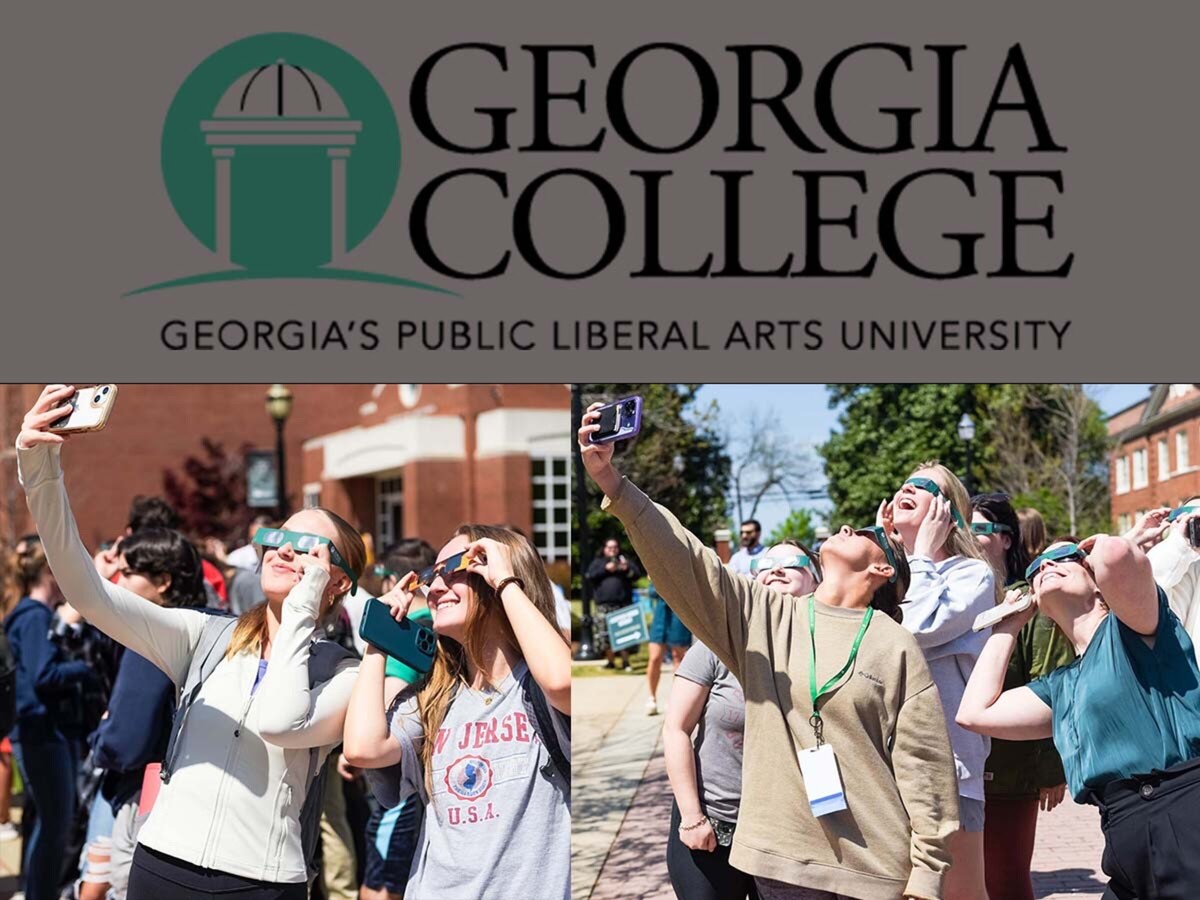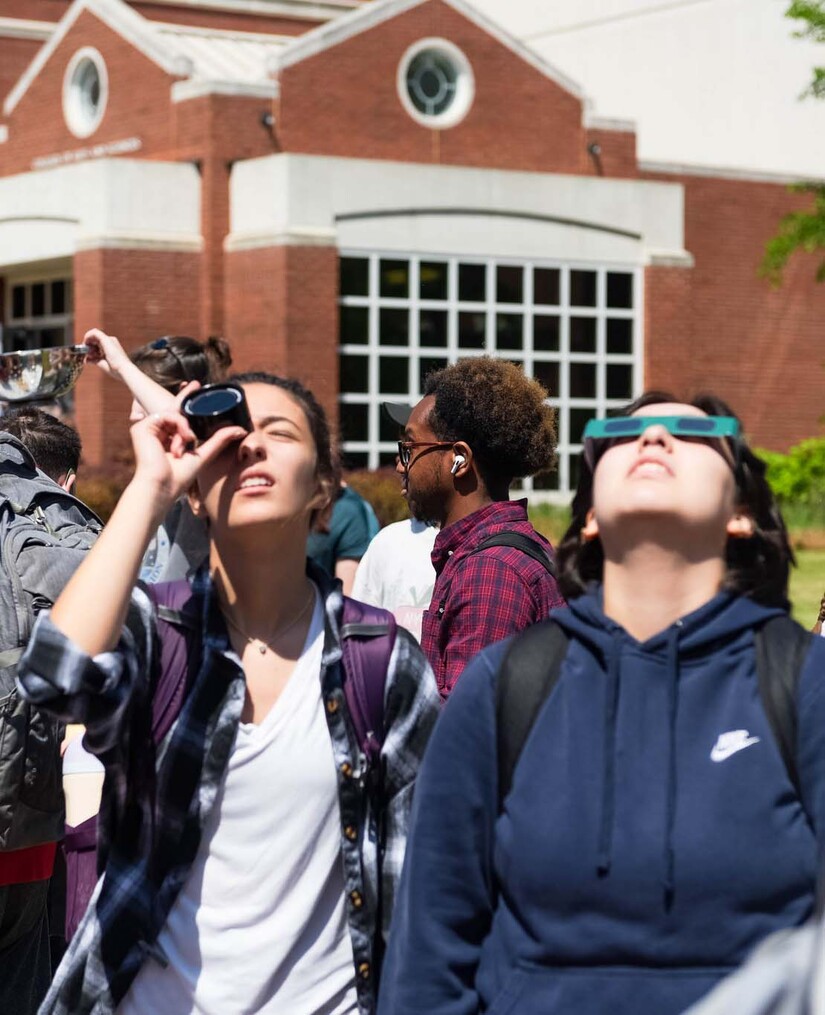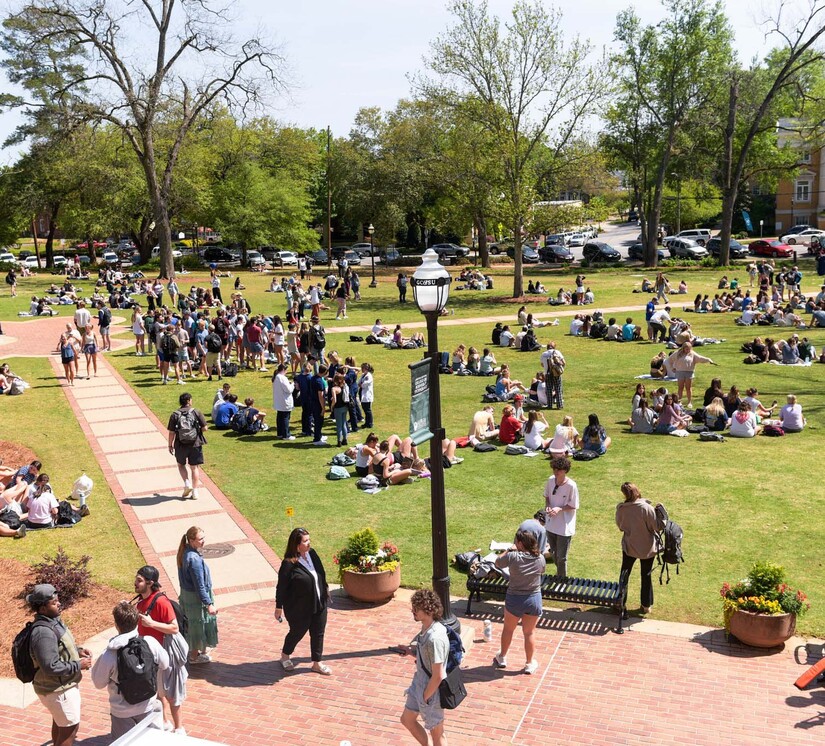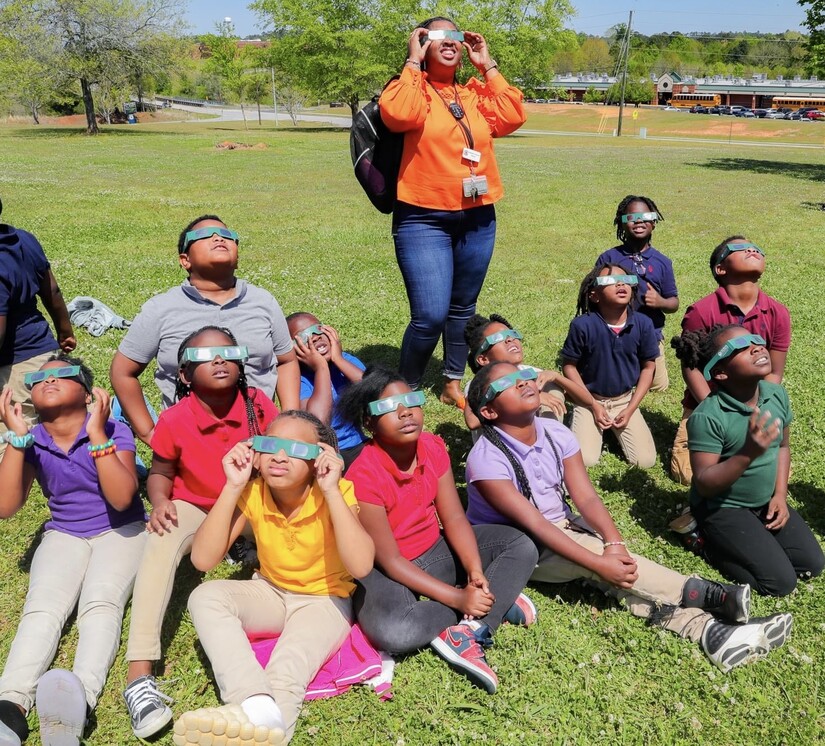Image

If there's a solar eclipse, but you don't take a picture of yourself, did the solar eclipse really happen?
It's a chance that many Georgia College & State University students weren't willing to take on Tuesday afternoon, as untold hundreds of solar eclipse selfies were captured around the Georgia College & State University campus, all for the greater good and all for historical documentation purposes, i.e. social media.
The place to be was Front Campus, which was blanketed with blankets and social eclipse enthusiasts, the majority of whom were there for the wonder and not preoccupied with social media feeds...


Photos by Georgia College & State University
The Baldwin County School District also got into the act, partnering with GCSU to provide "certified solar eclipse glasses" to any and all interested students. The man with the plan is Dr. Donovan Domingue, professor of physics and astronomy at Georgia College & State University.
"As he did in 2017, Domingue spent many months traveling to Baldwin and Jones County schools, prepping teachers on the science behind an eclipse. He helped create informational lessons and activities for the big day," according to a GCSU press release. "Between the two events, Domingue also supplied about 30,000 safe-viewing glasses to schools and local libraries."
A whopping 20,000 pairs of glasses were distributed on Tuesday, all funded by Georgia College’s Science Education Center, Department of Chemistry, Physics and Astronomy and the university’s Astronomy Kaolin Endowed Chair.



Photos by the Baldwin County School District
Monday marked the final solar eclipse that will be visible in Milledgeville until 2045.
Added the GCSU press release: "Two important things make this year’s solar eclipse brighter and more spectacular. The sun will be close to a solar maximum (2017 was close to a solar minimum), and the moon will be a couple thousand miles closer in orbit to Earth.
"This means viewers may be treated to large eruptions of solar material as they watch the eclipse, while a closer moon appears bigger and blocks more sun.
"Other fascinating facts:
"• Solar eclipses happen almost every year somewhere on the planet, but total solar eclipses over specific communities are rare. A community might not experience one in 200 or more years.
"• For a region like the U.S. to get two total solar eclipses in just seven years is “a truly remarkable occurrence.”
"• In 2017, the eclipse moved northwest to southeast from Oregon to South Carolina. It was the first U.S. coast-to-coast total solar eclipse in 99 years.
"• This year, the trek is southwest to northeast from Texas to Maine. (See this interactive map.)
"• In 2017, a narrow corridor through 14 states of the U.S. experienced the total solar eclipse—but only the northeastern tip of Georgia did. This year, 13 states in America will experience the eclipse in totality.
"• This year, maximum viewing times are nearly twice as long—4 minutes and 28 seconds in 2024 compared to 2 minutes and 40 seconds in 2017.
"• The 2024 corridor is wider too—about 115 miles in 2024 compared to approximately 70 in 2017.
"• Like last time, millions of Americans will see the 2024 eclipse. But this year’s eclipse will be seen by even larger populations as it moves through more densely populated areas."

